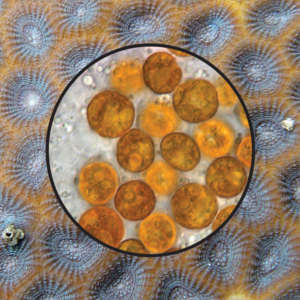Using AI to control energy for indoor agriculture
30 September 2024
Published online 10 August 2018
Corals and micro-algae have been together since the age of the dinosaurs.

Todd C. LaJeunesse
The team, which was led by Todd LaJeunesse at Pennsylvania State University and included Christian Voolstra of Saudi Arabia’s King Abdullah University of Science and Technology (KAUST), used genetic, molecular and morphological data to investigate the evolutionary history of Symbiodinium, the micro-algae that live inside coral cells, converting sunlight into energy. The analysis revealed that each of the subgroups within this genus is a full-fledged genus in itself.
The new classification “facilitates communication, because we can actually name things for what they are,” says Voolstra. “While most work until now inside this diverse group attempted to compare apples to apples, we now know we are often comparing apples and oranges.”
Biomolecular data also allowed the team to estimate that Symbiodinium diversified 160 million instead of 50–65 million years ago, as was previously thought. “The new estimate we put forth aligns well with a time captured in the fossil record where corals radiated into a plethora of many different species,” says Voolstra, adding that this implies that “the relationship between these symbionts and corals was a, if not the, major reason for the diversification and success of modern day coral reef ecosystems.”
The revised date also means that Symbiodinium species persisted through environmental changes that killed off the dinosaurs, demonstrating their potential resilience to climate change.
The findings provide an improved framework for investigating the biodiversity and natural history of the symbiotic algae. Earlier work by Voolstra and others has implicated Symbiodinium in helping corals cope with increased temperatures and environmental stress. With the new framework, researchers will be better able to investigate the environmental resilience of the symbionts, which is important for understanding coral bleaching.
Andrew Baird, a coral expert at James Cook University in Australia, who wasn’t involved in the study, adds that “the old distinctions were clumsy and confusing and led to much misunderstanding. The revised taxonomic framework should result in better science, more relevant hypotheses, and improved experimental designs.”
doi:10.1038/nmiddleeast.2018.92
LaJeunesse, T. C. et al. Systematic revision of Symbiodiniaceae highlights the antiquity and diversity of coral endosymbionts. Curr. Biol. 28, 1–11 (2018).
Stay connected: